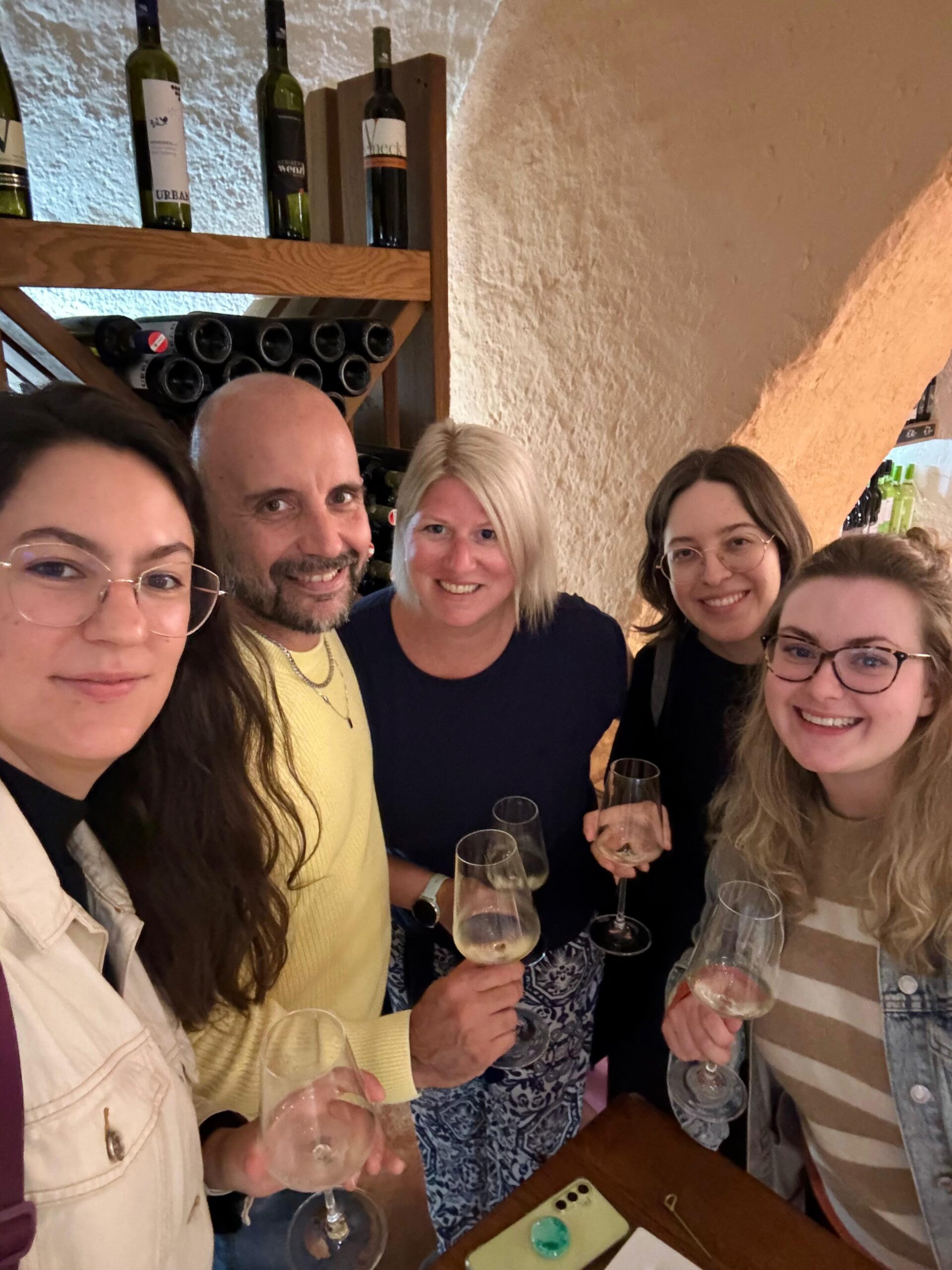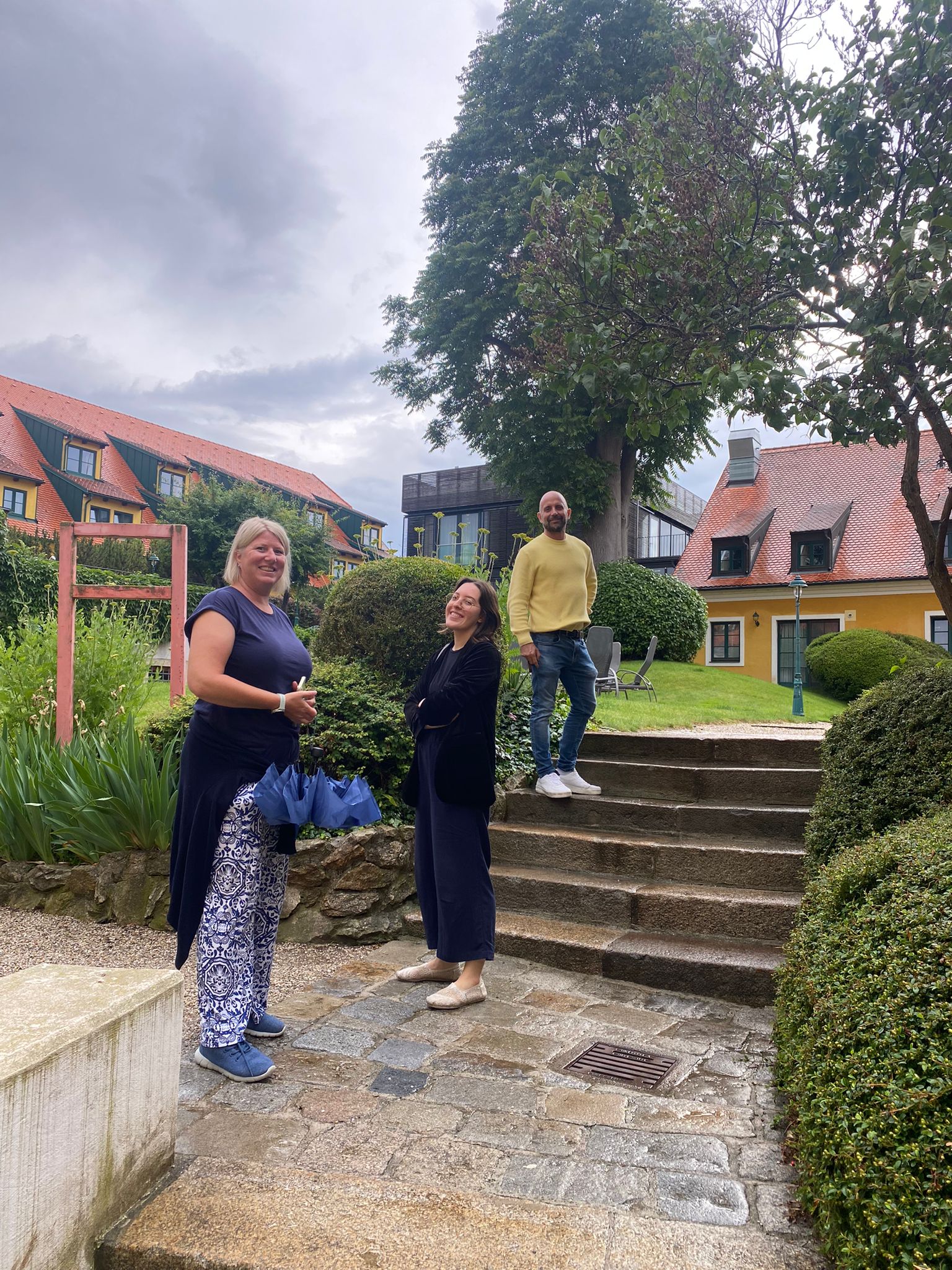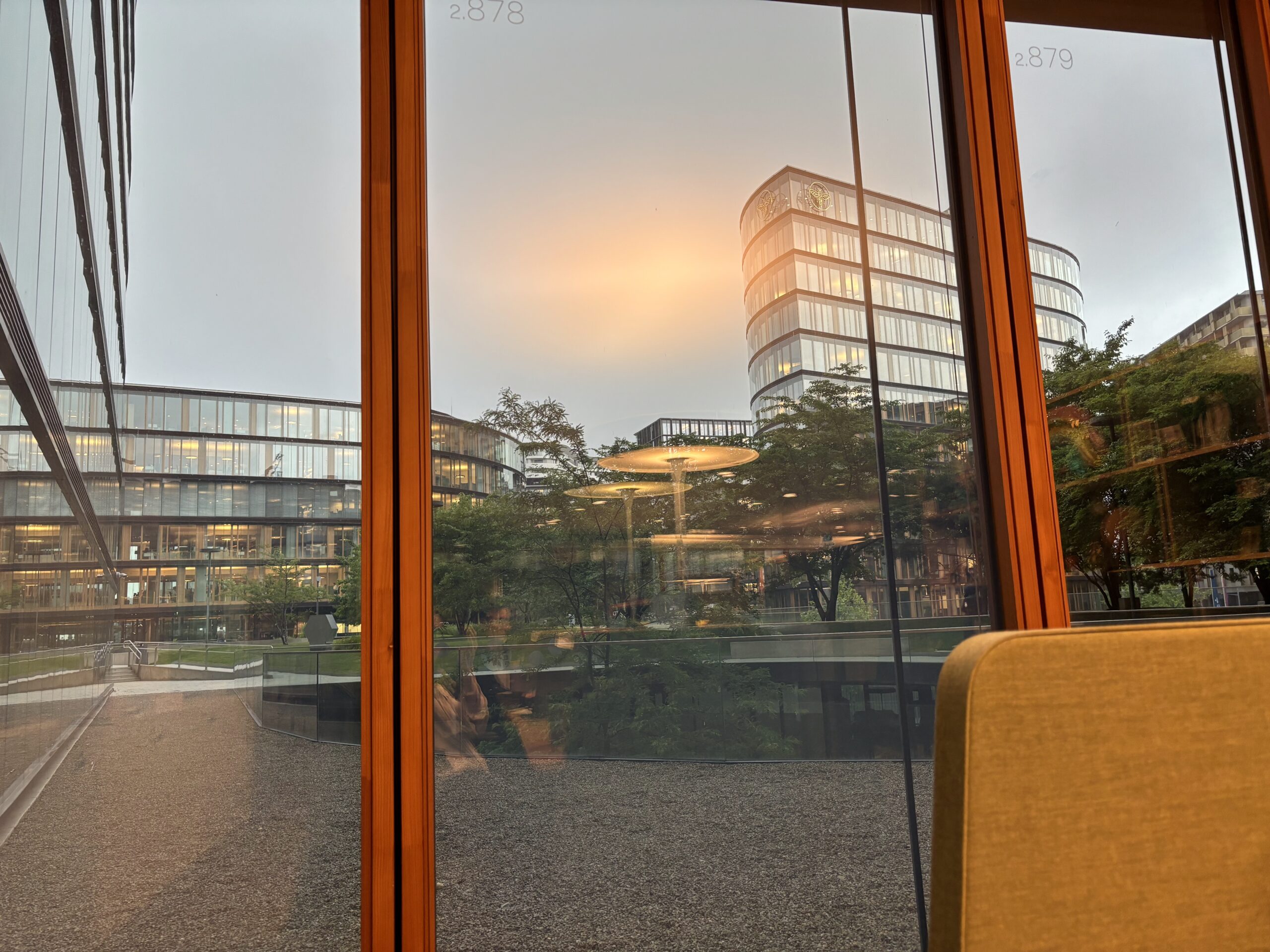What does a UI Writer do, you wonder? Wonder no further, because in this column we’ll share all our secrets with you. From detective work to button battles, we make George talk, charm, and save your day.
What’s a UI Writer?
When I tell people I’m a UI Writer, I almost always have to follow up with what that actually means. Sometimes it’s easier to say that I work for a bank, or that I work in software development, although neither statement really hits the nail on the head. When I’m trying to show off on my LinkedIn profile (who doesn’t), I’d say that I give George the voice he needs to connect with his users. In a team of four central UI writers, I make digital banking accessible and inclusive for 11 million users.
UI stands for “user interface”, and it’s the text that makes it possible for you to interact with software applications, from buttons and titles to the reminder that your bank account is empty and you can’t afford to spend 1.000 euros on that shiny IKEA wardrobe with the sliding glass doors.
Meet George, Erste Group’s mobile banking application
When I first heard of George, I had a clear image of him as a companion who helps you meet your financial goals and makes complicated adult things, like standing orders & savings accounts, easy to understand. I’d been out of the country for the last seven years, and so I hadn’t really met George before I finished university and developed an interest in fintech.
As a student in the UK, I loved how easy it was to manage my money with my Monzo account, how everything was simple and straightforward, with a bright interface and friendly illustrations. I thought that returning to Austria meant giving up on that ease, because after all, Austria is known for being stuck in the past. The locals say that Vienna is the best place to spend the apocalypse, because everything here happens with a 10 year delay.
“Our work is essential but often invisible.”
Meeting George was a wind of fresh air. George isn’t just a banking platform. He’s a personality—with a voice, a character, and a presence. George is friendly and helpful, and sometimes he makes jokes and acts cute. He’s someone you can rely on, the kind of “person” you’d introduce to your parents.
If it does happen that he can’t be there for you, he apologises and tells you that he will be back again very soon; he’d never willingly leave you to fend for yourself. The advice he gives is genuine and reliable, and it’s advice that you know you can trust. Nuggets of his personality are sprinkled throughout the app, little Easter eggs you can discover in time. All of these details add up, making George feel like a real presence—one that’s friendly and distinct.
When I decided to apply for my current role, I knew that I wanted to help build that character, to reinforce his presence and make sure that he was there at every turn. George is who he is because of the people who have crafted his character over the last 10 years; and the way he is, is unique from any other banking application.
We’re Detectives and Ninjas
What is it that a UI Writer does, then? On a daily basis, it’s a lot of detective work. We use a tool called Lingohub to keep track of our text components. Every day, BAs, testers, and delivery managers write us to ask, “why isn’t the text showing up”? When the text isn’t showing up, George speaks in tongues, aka translation keys, aka gibberish. Usually, it’s not our fault that a text isn’t showing up. But it’s our responsibility to figure out what happened to the text. We then ask questions like, “which environment did you test in?”, “which translation version did you check,” and, most frequently, “do you realise that “over the air” doesn’t mean the text will go straight into PROD?”
“George isn’t just a banking platform. He’s a personality—with a voice, a character, and a presence.”
When we’re not doing detective work, we’re usually working through our list of tickets. Sometimes these are small things, like fixing a typo that one of our testers found, but usually there are at least four or five bigger features we’re working on at a time. We receive a list of translation keys with text suggestions, and talk to a range of different people to fully understand the feature and convert the text suggestion from “computer science” level to “normal speak”. If we’re unlucky, we’ll spend 1.5 hours discussing if a button should be “Sign”, “Submit”, or “Send”. We sometimes get a 404 – will to continue not found – after these conversations, but it helps to have teammates who got your back. As fellow writers in a fintech environment, we share each other’s struggles and celebrate our victories together.

Team buildings keep our CopyComm spirits high.
Our work is essential but often invisible—when UI writing is done well, people don’t notice it. Unlike designers or developers, we don’t build interfaces or write code, but we shape the experience through words, ensuring every interaction with George feels seamless and natural. We aren’t just building things within the ordinary 2-week to 1-month development cycle, we’re also creating a concept over a long period of time; we’re creating a voice and a consistency that outlast us. The results of our efforts to make George sound natural, intuitive, and easy-to-understand won’t be measured in days so much as in months or years.
We Celebrate our Victories
There are some victories that we can celebrate in the short-term, however. Our clever copy for the Roundup Savings feature recently helped users in the Czech Republic put aside a total of 1.000.000.000 for many rainy days. Very soon, users will also be able to automate their savings by exercising: whenever they close an Apple Fitness ring, George will set money aside for them.
“We’re creating a voice and a consistency that outlast us.”
We were also able to help out on another rainy day that hit thousands of people across Europe. During the catastrophic floods last September, we were able to use our Donations feature as a bridge between people willing to help and people who’d been hit by the floods. In Austria alone, helpful souls donate 600 million Euros every year, making this a popular feature.
Over the last few years, we’ve also been turning George into a polyglot with AI-supported languages. George now speaks Vietnamese, Polish, Italian, and Turkish, among many others. These translations aren’t perfect, but they bring us closer to our goal; to make George accessible to as many people as possible. As George adapts to the world around him, we’re there with him every step of the way to give him a voice.
We Cut our Losses
Of course there are limits to what we can do, and sometimes the content of what we have to convey can be incredibly complex. I once found myself having to rephrase the sentence “Withdrawal due date cannot be greater than the next term deposit account due date + duration of withdrawal due date.” into something that would even remotely make sense. The final translation ended up being something along these lines: “You can’t set up an order with a due date in the future.” Bank speak and human speak aren’t always the same thing, but that’s what we translators are here for. Every day we fight for simple, understandable copy. At the end of the day, only those letters make it into the app which a UI writer has entered into our text management software. Another day behind us, another UX catastrophe averted.
“I give George the voice he needs to connect with his users.”

We hone our copywriting skills at copywriters’ retreats.
However, the worst copy decisions happen by chance. One day we were shocked to find two “Cancel” buttons next to each other. The responsible copywriter had only received a translation ticket for one of the “Cancel” buttons. The developers had placed the other button as the default destructive action. Learning: Never use the word “cancel” for the affirmative action.
A Day in the Life
To give you a better idea of what our days look like, here’s a typical day in the life of a UI Writer at George.
8:30 Respond to urgent messages. Sometimes this will involve locating keys or explaining the translation process to people who haven’t worked with us before. Perhaps a text was implemented a little differently from how it was requested. Worst case, we’re waking up to a broken translation file because someone created keys with a false key structure the day before, and we have to delete the corrupted key ASAP.
8:50 Do a Lingohub sync. We do have automatic updates, but twice a day we save our work manually, just in case.
9:00 Take a look at current tickets. Start with whatever is quick & easy. Write messages to the people who created the tickets in case anything is unclear.
11:00 Weekly meeting with the CopyComm team. We discuss what we are currently working on and compare notes on difficult tickets or bigger features.
12:00 Lunch.
12:45 Coffee & rebuilding focus.
13:00 Answer questions, work on short notice requests, e.g. cherrypicks. Cherrypicks are for last minute translation changes and we only do them when they’re absolutely necessary, as they require some DEV effort.
14:00 Tickets.
14:00 Review meeting with one of the squads. At the moment I’m responsible for 7 squads/teams. Together, five of these teams make up the Payments Cluster. My transactions and authorisations squads are in the Enabler/Empower clusters. At the review meetings, developers present the latest implementations from the sprint we just finished. Usually only a few small copy points come up at these meetings.
15:00 design & copy sync meeting with POs and BAs – a chance for the squads to discuss any concerns, wishes, and worries directly. Also a good chance to ask questions about current tickets.
16:00 More tickets. Talk to local copywriters to arrange some country-specific translations.
17:30 Head home knowing that George is a better version of himself than he was the day before.


